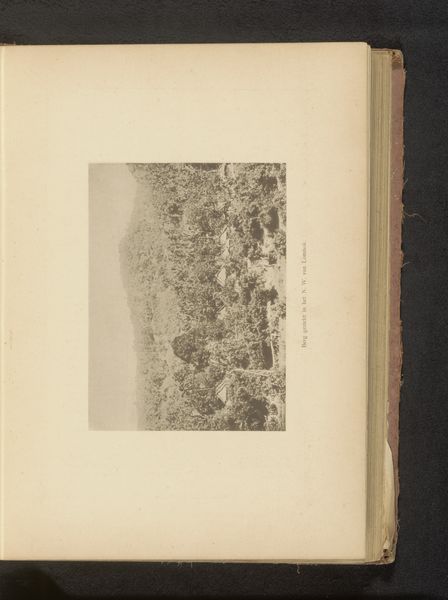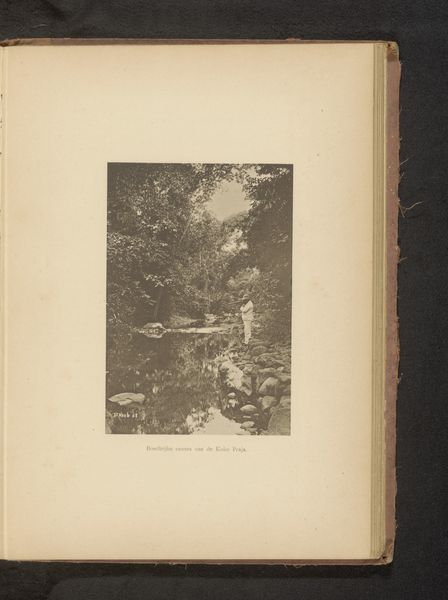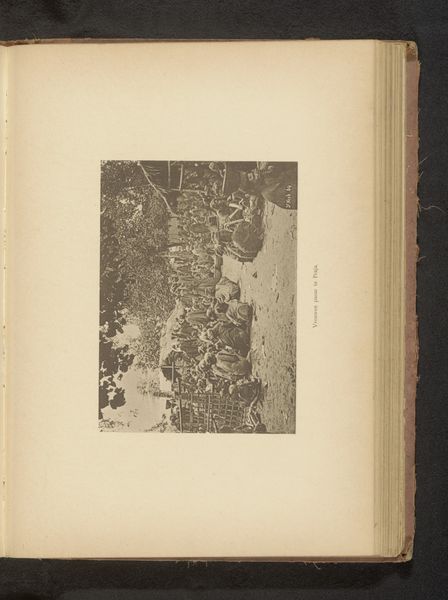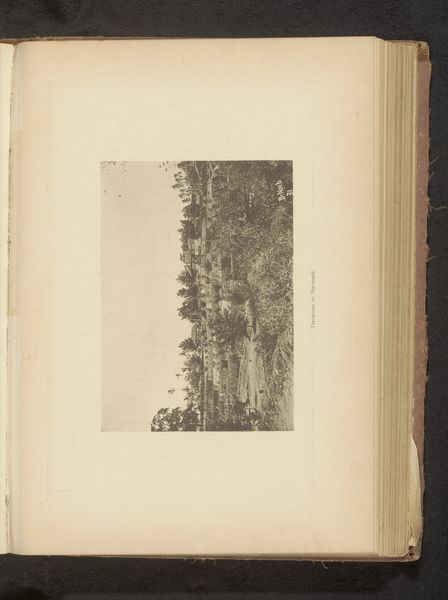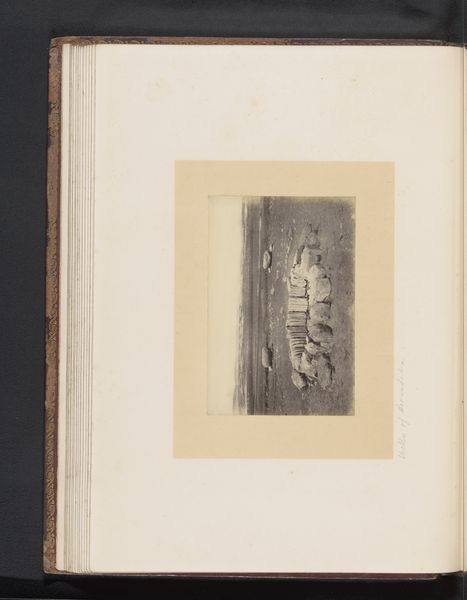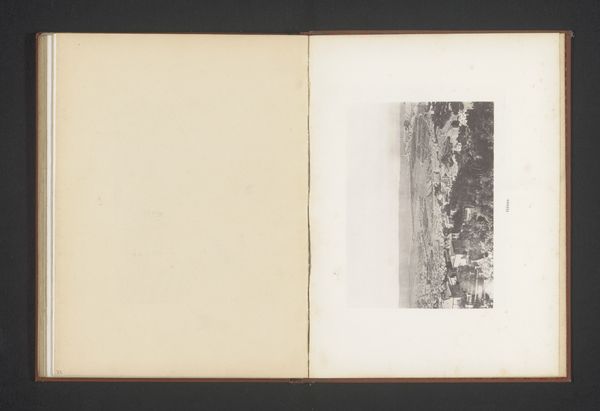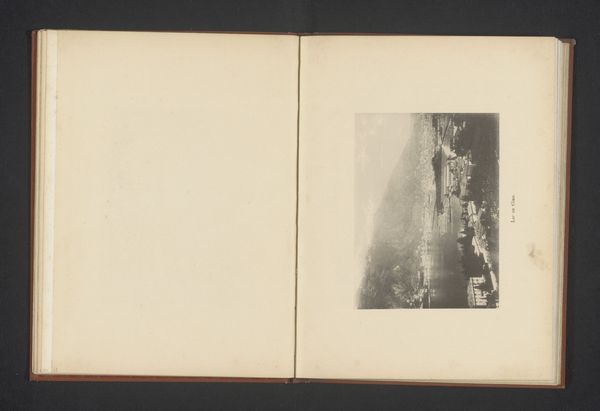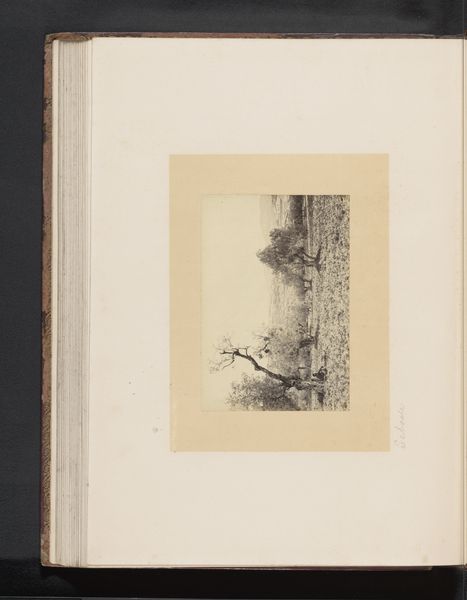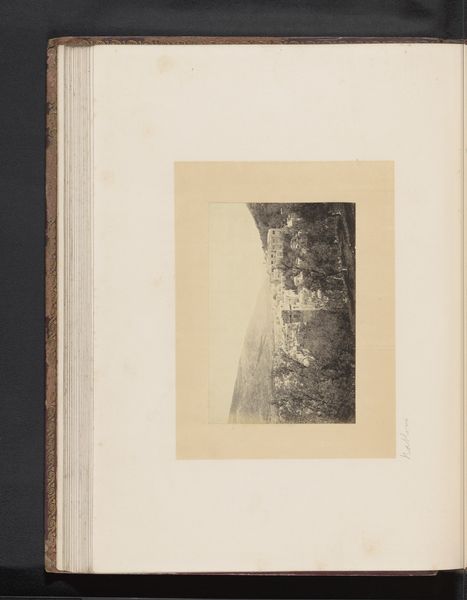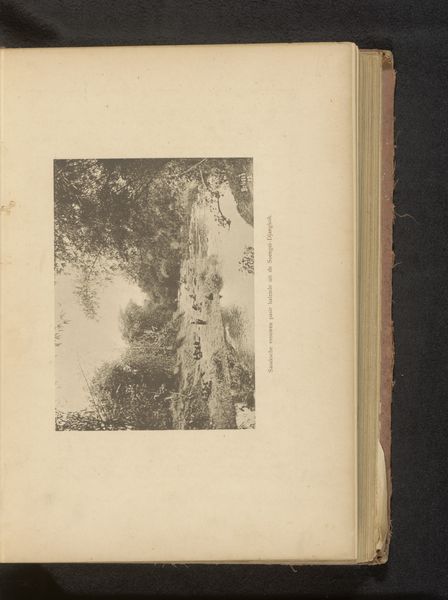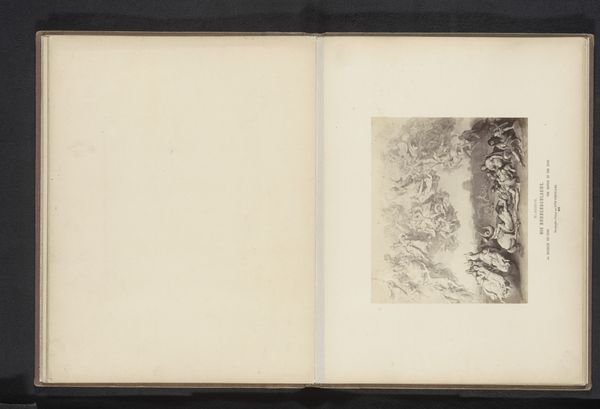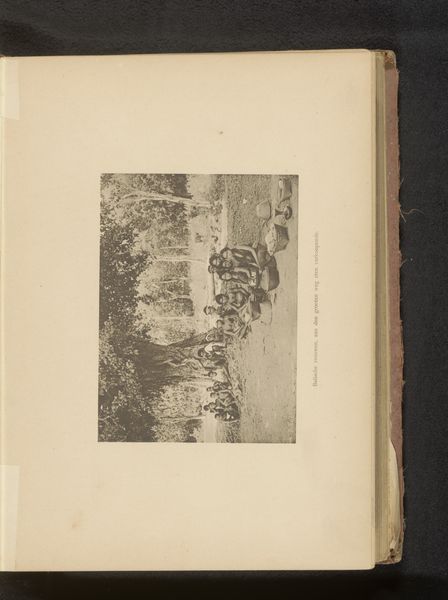
Dimensions: height 123 mm, width 168 mm
Copyright: Rijks Museum: Open Domain
Curator: Let's discuss Christiaan Johan Neeb's gelatin-silver print, "Gezicht op een weg met daarlangs bomen," dating from before 1897. It translates to "View of a road with trees alongside." What are your first impressions? Editor: Immediately, a dense, almost suffocating stillness comes to mind. The monochrome palette and heavy foliage create a sense of enclosure and perhaps a comment on humanity's relationship with nature. There's something quite sombre here. Curator: Precisely! I am particularly struck by the composition; how the converging lines of the road lead the eye toward an almost blinding light in the distance, set against the complex interwoven details of the trees. Note the textures: the soft, blurred foliage contrasts sharply with the defined lines of the pathway. It is a study in contrasts, playing with light and shadow. Editor: The very choice of photography at this time is meaningful. Landscape art has always had political valence, used to depict dominion, control and sometimes beauty, however, this shot of, what appears to be a tropical colonial road feels somehow...ominous, charged with what that "progress" actually looks like. Curator: Indeed, we might think about photography’s capacity for realism. It gives the piece an air of authenticity, presenting it almost as an unmediated view, whilst still allowing room for expression via composition and technique. The artist seems to play with this, and disrupt clear legible understanding of depth. The depth is suggested and created as an impression; as artifice. Editor: Absolutely. And that "unmediated view," particularly during that period, would reflect colonial power dynamics—whose view are we seeing, and from what position? How does the availability of roads determine the control over the land and movement in general? The artistic skill isn’t just formal but embedded in sociopolitical structures. Curator: The gelatin-silver printing process itself is relevant. Its capacity to capture a wide tonal range is used to great effect. These subtleties of light contribute to that complex depth, further evoking that strange combination of the ‘real’ with abstraction. This is a technical marvel that enhances the artwork. Editor: To understand the nuances of its execution is of course key but always, what strikes me, when approaching older works is how their echoes continue to shape perceptions, dialogues around identity, space, and justice. In fact, such conversations breathe fresh perspectives into any older works. Curator: It does enrich it, and that's the goal. Ultimately, this landscape urges a continuous exchange: what you see formally on the surface, what the material making reveals, but also the layers of interpretations it carries. Thank you!
Comments
No comments
Be the first to comment and join the conversation on the ultimate creative platform.

